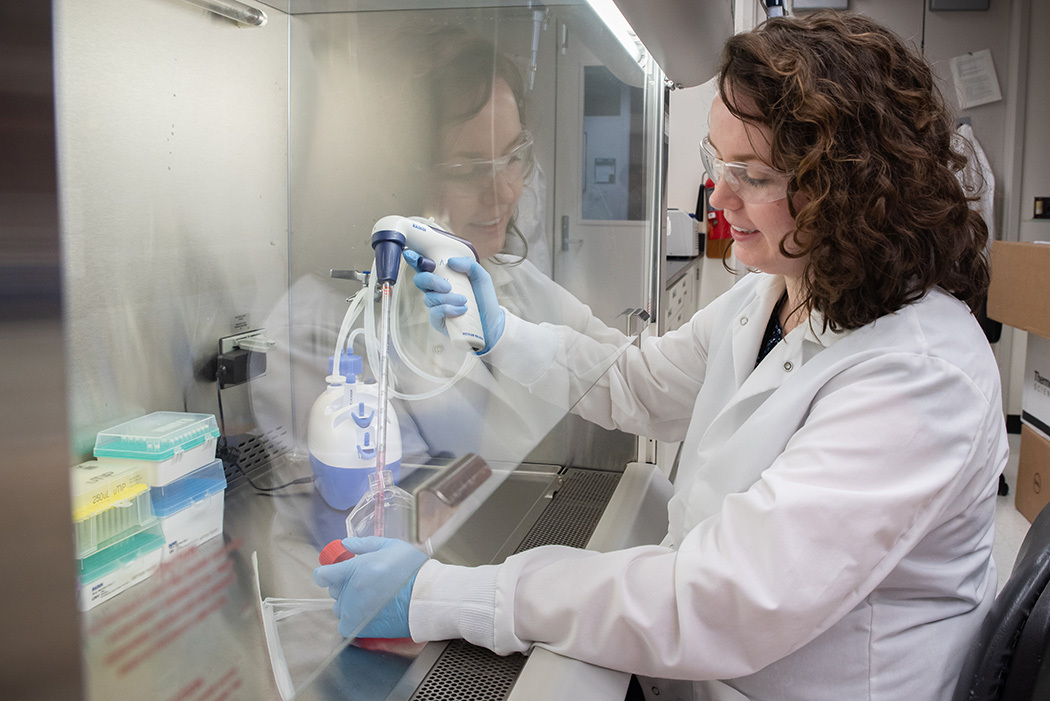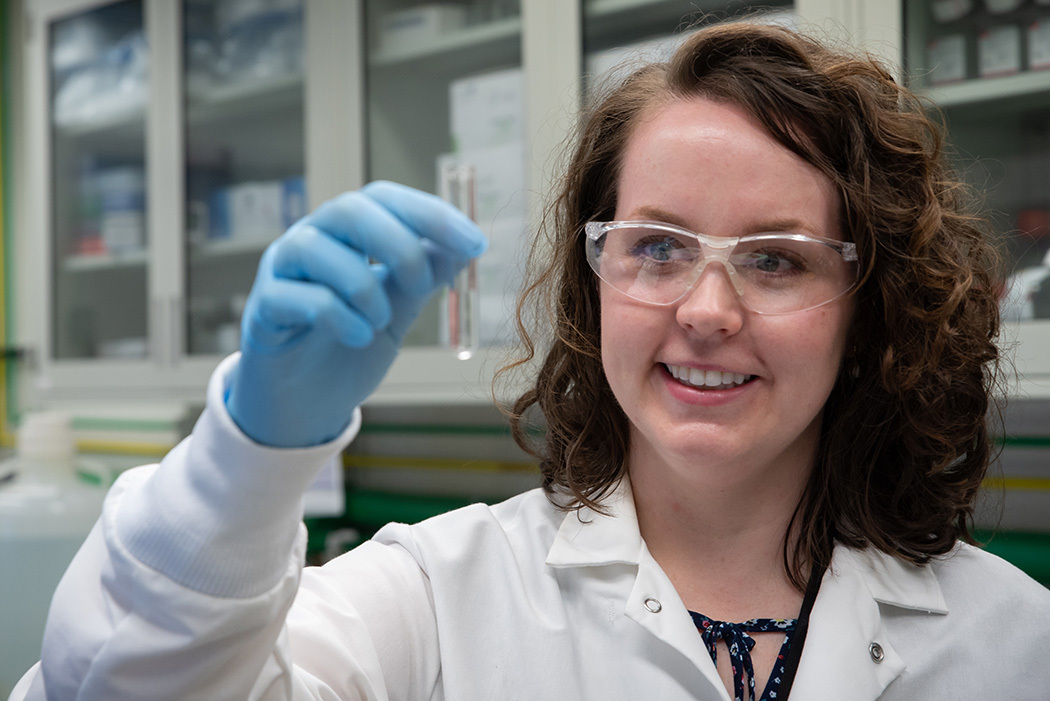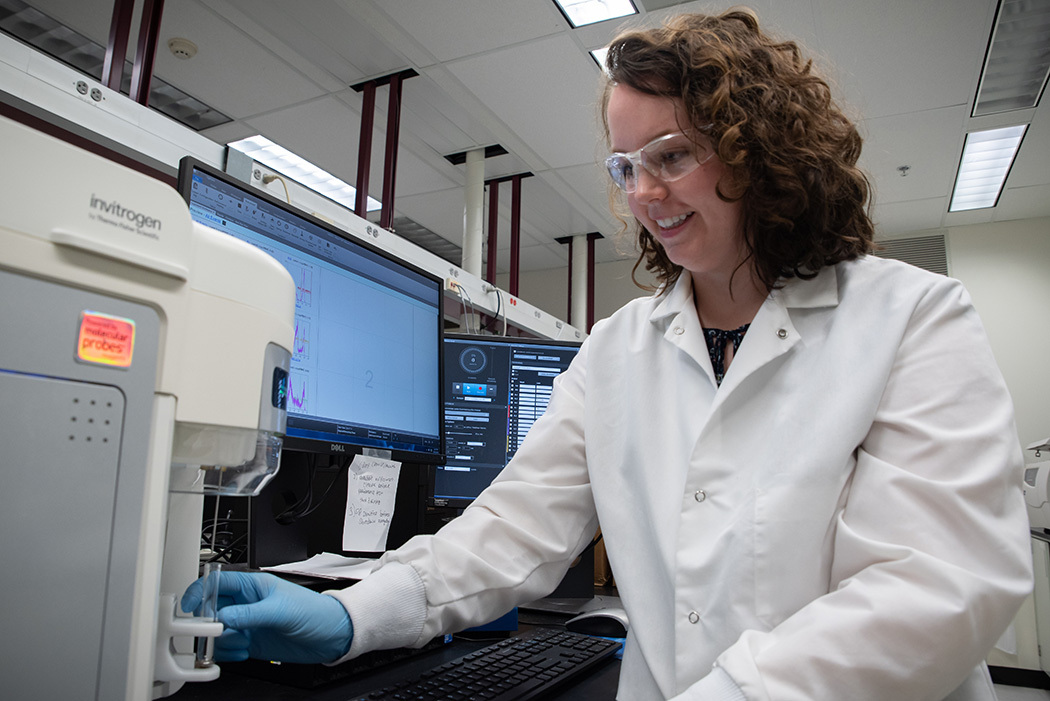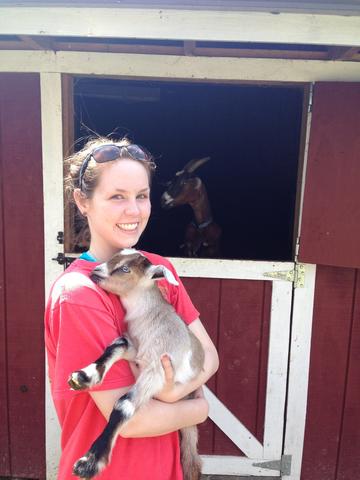
NIST researcher Jerilyn Izac harvests cells from cultures in her lab.
Credit:
R. Wilson/NIST
Even as COVID-19 remains, researchers are still working to stay ahead of future pandemics. Imagine if we could quickly and easily test everyone’s level of defenses (called antibodies) against dangerous viruses in the future.
What if we could identify who is most in need of booster shots against current or emerging viruses? We will all be much safer.
That’s what my team at NIST is working on, and we hope it becomes a reality in the future.
As with all work at NIST, it all starts with measurement.
See cells up close
We’ve heard the word “antibodies” a lot over the past few years, but how do they work?
When you are exposed to foreign or new things, your body produces large amounts of antibodies. They don’t all help (although they don’t cause harm), but “neutralizing antibodies” can help protect you from future viruses.
Neutralizing antibodies bind to pathogens, such as those that cause influenza or COVID-19, and prevent their entry into host cells or neutralize the pathogen. It acts like a bodyguard, preventing viruses from entering your cells. The best way to get these antibodies is through vaccination, but our bodies can also produce them after infection.
So if you have COVID-19 and get reinfected with the same strain, you may not be as sick the second time because your antibody bodyguards have seen this invader before!
In my lab, we created a program to calculate how many neutralizing antibodies a person can get from a vaccine or infection. It’s called a neutralization assay, and it allows us to test using surrogate viruses for COVID-19 (viruses that we can safely use).

NIST researcher Jeilyn Izac prepares a cell sample for a flow cytometer used in her lab.
Credit:
R. Wilson/NIST
To do this, we used a tool that analyzes individual human cells as they flow past the laser, allowing us to look at different parameters of the cells. This tool is called flow cytometry and is used in many aspects of research. Observing cells is crucial for vaccine development, so it is an important tool in my work.
This study was challenging because we used two different measurement techniques, one for flow cytometry and one for more traditional cell imaging. The biggest challenge is getting the right number of cells through the cytometer without having too many cells for our imaging method.
We saw the same level of neutralization using two different analytical methods! The potential to use either analytical method means that more researchers will be able to use our detection methods and can compare their work with other scientists. Some researchers do not have a flow cytometer but can image (or vice versa), so these results mean that our assay can be used by more researchers.
Prepare for future pandemics
There is still much research to be done in this area, especially if other laboratories can replicate our research on the current COVID-19 virus. We used a surrogate virus here for safety reasons, but we are fairly confident that the results will be similar to COVID-19 and other viruses. Labs that can handle more dangerous viruses need to see if they can replicate our results.

The flow cytometer helps researchers observe cells, a key part of vaccine development.
Credit:
R. Wilson/NIST
My main goal is that other researchers or clinical laboratories can use this approach to speed up our response to future epidemics. I hope this research will be applicable to other rapidly spreading viruses, such as influenza or future pandemic viruses.
If our approach is successful, in the future you may be able to get tested and see your antibody levels against various viruses (COVID-19, influenza, etc.) and find out which booster shot you need most.
If we could quickly understand people’s antibody levels early in the COVID-19 pandemic, we might be able to reduce deaths and hospitalizations. I hope this work will help us be better prepared for the future.
From farm life to vaccine researcher

Jerilyn Izac grew up on a farm, which introduced her to the importance of vaccines and launched her career in vaccine-related research. The goat behind her is named “Monster” to match the goat’s side eye in this photo.
Credit:
Contributed by Jerilyn Yitzhak
I grew up on a dairy farm with goats, sheep, chickens, and other types of animals. On the farm, we regularly use vaccines and medications to fight bacteria and viruses to keep our animals healthy. Making animals feel better is very meaningful to me.
My father was an organic chemist, so the farm was like a laboratory for me as a kid. We do some fun science experiments, like testing how many germs we have on our hands or on inanimate objects. (The answer is usually a lot!) Dad and I also enjoy looking at pond water under a microscope. A love of science came naturally to me from an early age.
Unfortunately, I also experienced some health challenges. My senior year in high school, I came down with mononucleosis and swine flu. I was ill for several months. That experience sparked my interest in learning more about viruses and how to prevent them.
With these experiences, it’s no surprise that I became a vaccine researcher!
I received my PhD in microbiology and immunology and my thesis was on developing a vaccine for human Lyme disease. While this vaccine has not yet been made public, there is already a lot of exciting research going on and it will be life-changing for many people.
Stay healthy through the science of measurement
This type of research has an exciting future. We are now looking at applying some of these same ideas to other pandemic viruses or potential gene therapies.
Forms of viruses, called viral vectors, are also commonly used as gene therapy for certain medical conditions. Viral vectors are currently used to treat spinal muscular atrophy as well as inherited retinal diseases. There are other drugs in clinical trials for breast cancer, skin cancer and rare genetic diseases.
But doctors and researchers must be careful to ensure these viruses are safe for patients receiving gene therapy, and we are working on tests that can help do this through very precise measurements. We’re looking at how to use flow cytometry to measure small viruses and look at what’s in them to make sure they’re as safe as possible for patients who need these treatments.
I am very passionate about using science to make people healthier. Whether making gene therapy safer or testing people for antibodies during a pandemic, I will continue to use measurement science to make the world a healthier place. I want to ensure that others are protected from viruses like the one I experienced.
